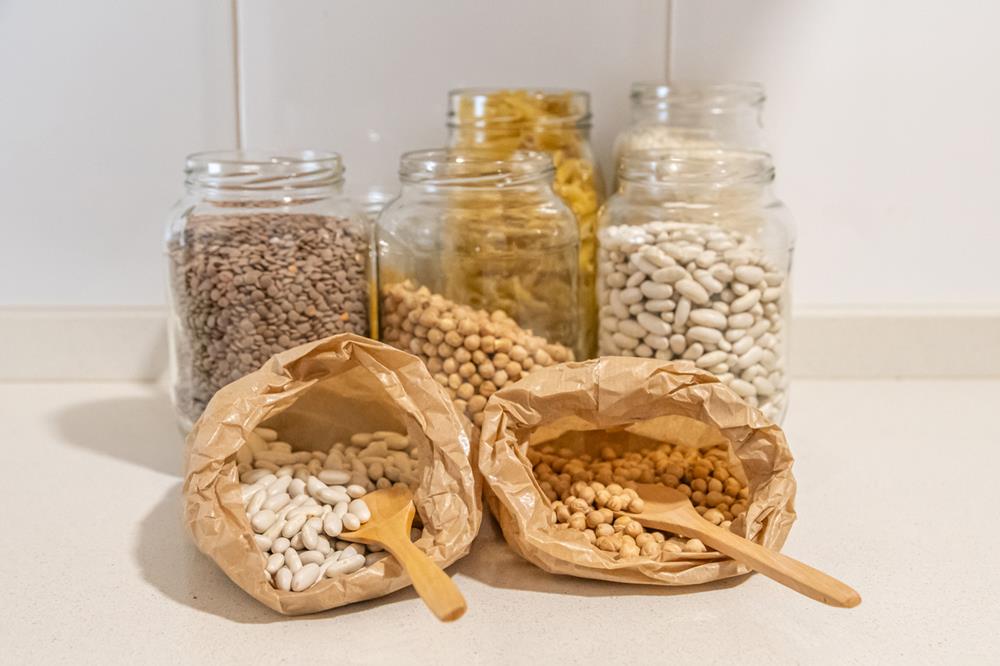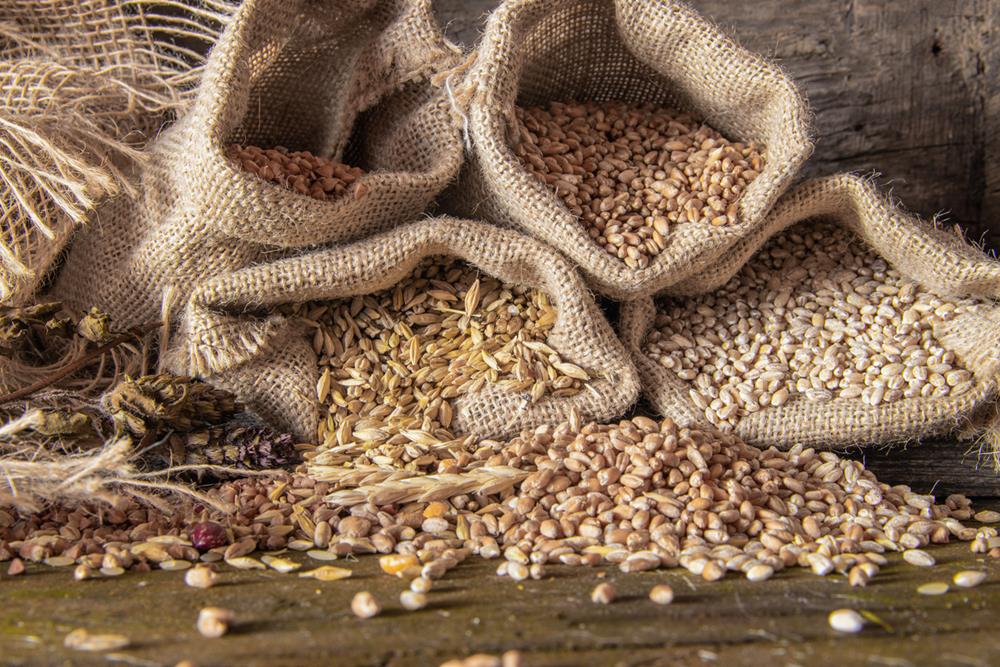The Best Place to Store Grains for Emergency Preparedness

When it comes to emergency preparedness, grains are a vital staple—they're affordable, calorie-dense, and have a long shelf life when stored properly. But storing them the right way is just as important as choosing the right kind. Poor storage conditions can lead to spoilage, pests, or loss of nutritional value. So, what’s the best place to store grains for long-term use?
In this article, we’ll explore the most effective storage locations and methods to keep your grains safe, fresh, and ready when you need them most.
| Storage Location | Recommended Conditions | Best Practices | Benefits |
|---|---|---|---|
| Cool, Dry Rooms | 50–70°F, low humidity | Use food-grade containers with oxygen absorbers; store off the ground on pallets | Prevents spoilage, mold, and insect infestations |
| Basements | Consistent temperature below 65°F | Insulate and ventilate; avoid placing containers on bare concrete | Ideal for long-term grain stability and shelf life extension |
| Pantries or Utility Closets | Dark, dry, moderate climate control | Label containers; practice FIFO rotation method | Convenient access for rotation and regular inspections |
| Climate-Controlled Storage Rooms | Stable environment year-round | Monitor temperature and moisture levels regularly | Maintains optimal grain quality and safety |
| Elevated Storage (on shelves or pallets) | Away from concrete floors | Use Mylar bags in sealed buckets; add diatomaceous earth | Reduces moisture exposure and pest risk |
Optimal Conditions for Grain Storage
Storing grains properly is essential for preserving their quality and ensuring they remain usable during emergencies. The right conditions can dramatically extend shelf life and protect your investment.
Temperature & Environment: Choose a cool, dry location with a stable temperature between 50–70°F. Avoid areas with high humidity or frequent temperature fluctuations, which can promote spoilage and mold growth.
Moisture Control: Keep the moisture content below 10% to prevent mold. Maintaining dryness is one of the most important factors for long-term grain storage.
Storage Containers: Use airtight, food-grade containers like buckets with mylar bags and oxygen absorbers. This combination protects against moisture, oxygen, pests, and light—extending the shelf life of grains significantly.
Shelf Life: Properly stored wheat, rice, beans, and legumes can last 10 years or more, making them ideal staples for emergency preparedness.
Rotation Method: Practice the First In, First Out (FIFO) method by regularly rotating your supply. This ensures that older grains are used first and your stock remains fresh.
By maintaining optimal storage conditions and using the right tools, you can ensure your emergency food supply remains safe, nutritious, and ready when you need it most.
Essential Supplies for Grain Storage

Proper grain storage starts with having the right supplies. These tools help protect your food from spoilage, pests, and nutrient loss—ensuring your emergency stockpile remains fresh and reliable.
Airtight Containers
Use food-grade buckets, Mylar bags, or a combination of both for optimal protection. Pair them with oxygen absorbers to remove air and reduce the risk of spoilage, mold, or infestation.Cool, Dry Storage Area
Maintain a consistent temperature between 50–70°F in a dry, dark location. Avoid areas prone to humidity or temperature swings, which can shorten shelf life.Vacuum Sealer
For short-term storage or smaller portions, vacuum sealing is a great way to reduce air exposure and keep grains fresh.Diatomaceous Earth (Food Grade)
To naturally deter insects, mix about 1.25 cups of diatomaceous earth per 5-gallon bucket of wheat. It’s safe when used properly and adds an extra layer of pest protection.Labeling System
Clearly label containers with packing dates. This makes it easy to follow the First In, First Out (FIFO) method, ensuring older grains are used before newer ones.
Having these essential items on hand ensures your grain storage setup is effective, efficient, and ready to support your emergency preparedness plan.
Protecting Grains From Moisture

Moisture is one of the biggest threats to long-term grain storage, but with the right precautions, keeping your grains dry and safe is simple and effective.
Use Airtight Containers
Store whole grains in airtight, food-grade containers such as Mylar bags sealed inside buckets. This prevents moisture from seeping in and preserves both quality and nutritional value.Control Storage Environment
Keep containers in a cool, dry location with temperatures ideally between 50–70°F. Consistent, moderate temperatures help extend shelf life and reduce the risk of condensation or mold.Elevate Your Containers
Avoid placing storage containers directly on concrete floors, which can retain and transmit moisture. Instead, raise them on pallets or boards to improve air circulation and reduce risk.Use Oxygen Absorbers
Oxygen absorbers not only eliminate oxygen but also help reduce residual moisture inside sealed containers—offering another layer of protection for your grains.Consider Preservation Methods
Techniques like water glassing, commonly used for preserving eggs, can also inspire moisture-barrier approaches for other food items, though not typically used for grains directly. The concept of sealing to block moisture remains key.Inspect Regularly
Periodically check for condensation, mold, or off-odors. Early detection helps prevent larger issues and ensures your grains stay safe and usable.
By taking these steps, you can significantly reduce the risk of moisture damage and ensure your grains stay fresh and viable for long-term emergency use.
Preventing Insect Infestations in Grain Storage

Insect infestations can quickly compromise your emergency food supply, making proactive prevention essential. With the right methods, you can protect your grains and ensure long-term storage success.
Use Airtight Containers with Oxygen Absorbers
Store grains in sealed plastic pails or Mylar bags with oxygen absorbers. Removing oxygen creates an environment that’s hostile to insect life and helps prevent the development of pests.Freeze Grains Before Storage
Since insect eggs can be present in grains, freeze them at 0°F (-18°C) for at least 48 hours before storage. This kills any dormant eggs without affecting the grain's quality.Add Diatomaceous Earth (Food Grade)
Mix 1.25 cups of food-grade diatomaceous earth per 5-gallon bucket of grain. This natural substance dehydrates and kills insects without harming the grains or those who consume them.Inspect Regularly
Periodically check containers for signs of infestation, such as webbing, unusual odors, or small holes. Early detection can help you address problems before they spread.Practice Proper Rotation (FIFO)
Use the First In, First Out (FIFO) method to rotate your supply. Consuming older grains first helps prevent long-term storage issues and keeps your inventory fresh.
By combining airtight storage, temperature control, and natural pest deterrents, you can effectively prevent insect infestations and keep your grain supply safe, nutritious, and ready for emergencies.
Importance of Using Food-Grade Containers

Once you've taken steps to protect your grains from insects, the next critical factor is selecting the right storage containers.
Food-grade containers are essential for long-term grain storage. They’re specifically designed to avoid chemical leaching and are safe for storing consumables like wheat, rice, beans, and other staples. For best results, use pre-sealed plastic pails or Mylar bags paired with oxygen absorbers. This setup minimizes oxygen exposure and significantly extends shelf life.
Avoid using regular plastic bags or non-food-grade containers, as these can compromise the safety and quality of your grains. Instead, choose containers with tight-fitting lids to maintain freshness and block out moisture, pests, and air.
A cost-effective tip: Local bakeries often give away empty food-grade icing buckets, which are perfect for bulk storage when cleaned properly.
Lastly, always label your containers with packing dates. This makes it easy to follow the First In, First Out (FIFO) method and ensures you're using your oldest stock first, keeping your supply as fresh and organized as possible.
Monitoring and Maintaining Grain Quality

To ensure your stored grains remain fresh, safe, and ready for use, ongoing monitoring and maintenance are essential parts of your emergency preparedness plan.
Use Proper Storage Methods
Store grains in Mylar bags sealed with oxygen absorbers, then place them in food-grade buckets. This setup effectively protects against moisture, pests, and oxidation—key threats to long-term grain quality.Maintain Low Moisture Levels
Aim to keep moisture content at or below 10%. Higher moisture levels can lead to mold growth and spoilage. A cool, dry storage environment helps maintain this balance.Inspect Regularly
Periodically check for signs of spoilage, including off smells, discoloration, or the presence of insects. Early detection can prevent loss and contamination of your entire supply.Freeze Grains as a Precaution
For added safety, freeze grains at 0°F (-18°C) for 48 hours before storage. This kills any dormant insect eggs without affecting grain quality.Practice Stock Rotation (FIFO)
Label containers clearly and follow the First In, First Out (FIFO) method to ensure older grains are used first, keeping your supply fresh and reliable.
By consistently monitoring conditions and following best practices, you can maximize the shelf life and nutritional value of your stored grains—ensuring a dependable food source when it matters most.
The Role of Temperature in Grain Storage
Temperature plays a crucial role in preserving the quality and shelf life of stored grains. Keeping grains at the right temperature helps prevent spoilage, nutrient loss, and pest activity—making it a key factor in effective long-term storage.
Ideal Temperature Range
Aim to store grains between 50–70°F, with temperatures below 65°F being optimal for preserving nutritional value and preventing deterioration.Avoid Fluctuations
Consistent temperatures are essential. Fluctuating temperatures can lead to condensation, which increases the risk of mold growth and insect infestations.Choose the Right Location
For emergency storage, use cooler areas like basements, pantries, or climate-controlled rooms. These environments help maintain stable conditions and can extend the shelf life of grains for decades.Use Insulation and Ventilation
Proper insulation and air circulation help regulate temperature and reduce humidity, further protecting your stored food from spoilage.
By carefully managing temperature and choosing the right storage location, you can significantly extend the life and quality of your grain supply—ensuring it remains a dependable resource during emergencies.




